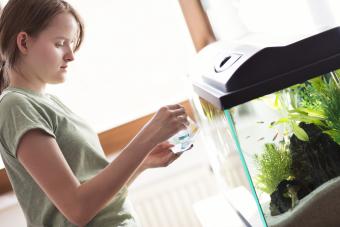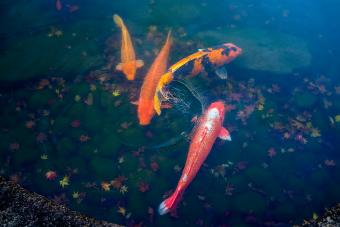
Fish keepers need to remain patient when they learn how to cycle a fish tank. This nitrogen cycle process occurs in your fish tank's water, and certain bacteria help eliminate waste products your fish excrete. In the beginning, there are not enough bacteria present to take care of the problem. With that in mind, this process takes time.
How to Cycle a Fish Tank
Fish keepers need to cycle a new aquarium to ensure all the fish have the best possible survival chance. The nitrogen cycle uses bacteria to create a liveable environment for your fish. There are two ways to cycle a tank. One is with starter fish, and the other is known as fish-less cycling.
How to Instantly Cycle a Fish Tank
Fish keepers encourage the growth of beneficial bacteria during aquarium cycling with live plants, starter fish, gravel, and fish food. There are specific steps that may speed up the process. Your local pet store may also carry additives to increase cycling time. These products are called pre colonized mediums.
Starter Fish
New hobbyists may add one or two fish after a couple of weeks. These are known as starter fish and a great way to provide a small amount of waste in your tank so the bacteria can multiply. Danios or a type of guppy as both are hardy fish and perfect candidates for starter fish.
Mature Gravel
This step may require a friend's help. Gravel from a mature aquarium already has a large bacteria population and is an excellent starter.
Food
When you add a small amount of food to the tank each day, you can also kick start the nitrogen cycle. A few small pinches twice a day starts the ammonia production as the food starts to break down.
How Long to Cycle a Tank Before Adding Fish
If you cycle the tank without fish, the cycling or conditioning process can take four to six weeks. It varies on the size of your system and the temperature of the water. Many fish keepers prefer to wait for just a couple of weeks and add a few small fish to the aquarium to start the above process.

How to Cycle a Tank Without Fish
Place fish food or another source of ammonia in an empty fish tank to grow bacteria. With that in mind, fish keepers are more successful with starter fish.
Aquarium At-Home Water Test Kit
An at-home water test kit helps you determine if there are toxic levels of nitrogen compounds in the aquarium. Every fish keeper needs to know the steps involved with cleaning a fish tank and how to use at-home test kits. After a few weeks of the nitrogen cycle process, a new fish keeper needs to test ammonia and nitrite levels to prevent new tank syndrome. All at-home test kits include comprehensive instructions.
Signs of New Tank Syndrome
Do not overstock the tank. Fish keepers need to be patient to prevent new tank syndrome! Only add a few fish at a time and then observe the environment each week. The symptoms of new tank syndrome result from too many fish and uneaten food at the bottom of the aquarium. Hobbyists need to carry out regular water changes.
- Fish lose their coloring
- Some starter fish hide in corners
- Other species lie near the bottom of the tank
Create a Liveable Environment for Your Fish
The best way to start the aquarium nitrogen cycle is to add a small amount of starter fish and gravel from a more mature tank. Don't add too many fish or you may overload the process, which causes new tank syndrome. New hobbyists don't need to wait a full four to six weeks. After a couple of weeks add one or two fish and the gradual increase of fish help keep bacteria present to do their job.







